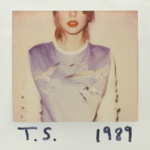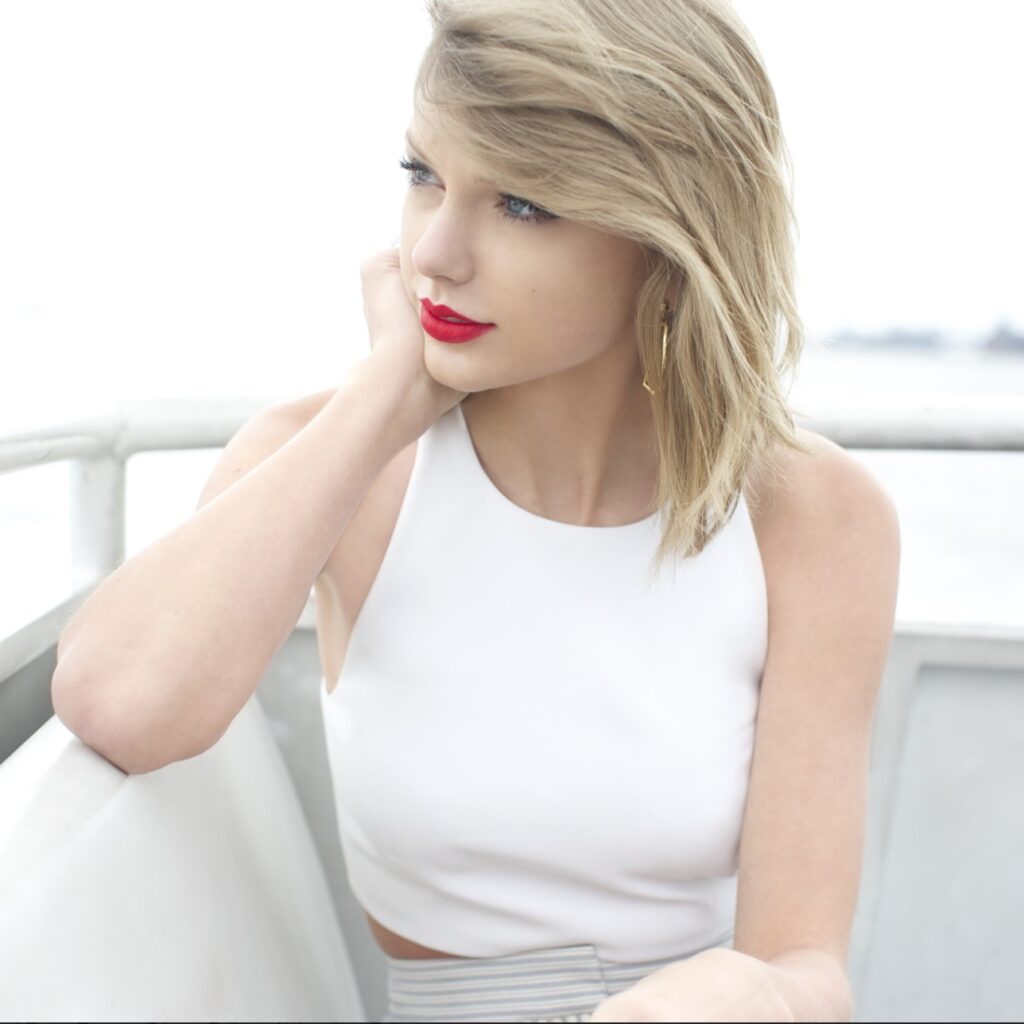
1989
1989 October 27, 2014 This article is about the album. For the 2023 re-recording, see 1989 (Taylor’s Version).1989 is Taylor’s fifth studio album. It was released on October 27th, 2014 as her first official pop album. She named
«I woke up at four in the morning and I was like, ‘It’s called 1989. I’ve been making ’80s synth pop, I’m just gonna do that. I’m calling it a pop record. I’m not listening to anyone at my label. I’m starting tomorrow.'»
Taylor Swift
«If I’m in the mood to be held accountable for every single article of clothing on my body, whether it matches, if it clashes, if it’s on trend, then I go out. If I’m not interested in undergoing that kind of debate and conversation – regarding how I’m walking, whether I look tired, how my makeup is right, what’s that mark on my knee, did I hurt myself? – I just don’t go out.»
Taylor Swift



1989 October 27, 2014 This article is about the album. For the 2023 re-recording, see 1989 (Taylor’s Version).1989 is Taylor’s fifth studio album. It was released on October 27th, 2014 as her first official pop album. She named
«I feel like watching my dating life has become a bit of a national pastime. And I’m just not comfortable providing that kind of entertainment anymore. I don’t like seeing slide shows of guys I’ve apparently dated. I don’t like giving comedians the opportunity to make jokes about me at awards shows. I don’t like it when headlines read ‘Careful, Bro, She’ll Write a Song About You,’ because it trivializes my work. And most of all, I don’t like how all these factors add up to build the pressure so high in a new relationship that it gets snuffed out before it even has a chance to start. And so, I just don’t date.»
Taylor Swift


«Everyone, in and out of the music business, kept telling me that my opinion and my viewpoint was naive and overly optimistic — even my own label. But when we got those first-day numbers in, all of a sudden, I didn’t look so naive anymore.»
Taylor Swift
«My friends and I text every day. That’s 20 to 25 girls. Some of them are group texts, most of them are single texts. We know when everybody’s in New York, who’s in town, who’s in L.A. Being a huge group of girls who love each other, we know where everyone is…I’ve never had this before. I feel uncomfortable being the No. 1 priority in my friends’ lives. I want to be there to make their lives more fun, if they need to talk, to be there for spontaneous and exciting adventures, but I don’t want friends who don’t have a life outside of me. The one thing they all have in common is that they love what they do. They have me in their life because they want me in their life, not because they gain from it.»
Taylor Swift
«Never being popular as a kid was always an insecurity for me. Even as an adult, I still have recurring flashbacks sitting at lunch tables alone, or hiding in a bathroom stall or trying to make a new friend and being laughed at. In my 20s, I found myself surrounded by girls who wanted to be my friend. So I shouted it from the rooftops, posted pictures and celebrated my new found acceptance into a sisterhood without realizing that other peole might still feel the way I did when I felt so alone. It’s important to address our long-standing issues before we turn into the living embodiment of them.»
Taylor Swift



The 1989 World Tour 2015 “The 1989 World Tour” was Taylor’s fourth concert tour, in support of her fifth studio album, 1989 (2014). It began on May 5, 2015, in Tokyo, and concluded on December 12, 2015, in Melbourne, the day before Taylor’s 26th birthday.
«I know that with the way the fans have latched onto this album, the setlist will be predominantly songs from 1989. You know, when I go back and play songs I know they want to hear, like “Love Story” or “I Knew You Were Trouble,” it’ll be interesting to reimagine them so that the fans get a new experience that feels in keeping with 1989. But I’m so excited. I have so many things I’ve been dreaming up for this.»
Taylor Swift


«I’m always up for trying something. And I tried it and I didn’t like the way it felt. I think there should be an inherent value placed on art. I didn’t see that happening, perception-wise, when I put my music on Spotify. Everybody’s complaining about how music sales are shrinking, but nobody’s changing the way they’re doing things. They keep running towards streaming, which is, for the most part, what has been shrinking the numbers of paid album sales. On Spotify, they don’t have any settings, or any kind of qualifications for who gets what music. I think that people should feel that there is a value to what musicians have created, and that’s that.»
Taylor Swift
«Convincing members of my team that [the pop move] was a good call. People seem to love the album, and we’re all high-fiving each other, but I remember all the sit-downs in the conference rooms, where I would get kind of called in front of a group of people who have worked with me for years. They said, 'Are you really sure you want to do this? Are you sure you want to call the album 1989? We think it’s a weird title. Are you sure you want to put an album cover out that has less than half of your face on it? Are you positive that you want to take a genre that you cemented yourself in, and switch to one that you are a newcomer to?' And answering all of those questions with 'Yes, I’m sure' really frustrated me at the time — like, 'Guys, don’t you understand, this is what I’m dying to do?' The biggest struggle turned into the biggest triumph when it worked out.»
Taylor Swift


«I’m in the news every single day for multiple different reasons. And it can feel, at times, if you let your anxiety get the better of you, like everybody’s waiting for you to really mess up – and then you’ll be done. A lot of the time I need to call my mom and talk for a really long time, just to remind myself of all the things that are great and all the things that matter. If you do something that defines your character to be not what the public thought you were, that’s the biggest risk.»
Taylor Swift

Music Hiatus 2016-2017 From March 2016 to August 2017, Taylor took her first extended hiatus since the beginning of her career in 2006, following the massive success of 1989. It turned out to be a very eventful and challenging time in her life.
«I learned over the years that it is not good for me to see pictures of myself every day. Because I have a tendency – and it’s only happened a few times and I’m not in any way proud of it – but I tend to get triggered by something, whether it’s a picture of me where I feel like I looked like my tummy was too big, or like someone sad that I looked pregnant or something, and that’ll just trigger me to just…starve myself a little bit. Just stop eating. I thought I was just supposed to feel like I was gonna pass out at the end of a show, or in the middle of it. I thought that was how it was. And now I realize no, if you eat food, have energy, get stronger you can do all these shows and not feel it. Which is a really good revelation because I’m a lot happier with who I am.»
Taylor Swift


«You know, I went out on a normal amount of dates in my early 20s, and I got absolutely slaughtered for it. And it took a lot of hard work and altering my decision-making. I didn’t date for two and a half years. Should I have had to do that? No. I guess what I wanted to call attention to in my speech at the Grammys was how it’s going to be difficult if you’re a woman who wants to achieve something in her life — no matter what.»
Taylor Swift
«Honestly, I never relax, and I’m excited about being able to relax for the first time in ten years. I’m just taking things as they come. I’m in a magical relationship right now. This is the one thing that’s been mine about my personal life. I just decided that after the past year, with all of the unbelievable things that happened...I decided I was going to live my life a little bit without the pressure on myself to create something. I’m always going to be writing songs. The thing is, with me, I could very well come up with three things in the next two weeks and then jump back into the studio, and all of a sudden the next record is started. That’s an option, too. But probably not for the moment. I would really like to take a little time to learn things. I have lots of short-term goals.»
Taylor Swift
| Associated Album | 1989 | |||
|---|---|---|---|---|
| Beginning of Era | August 2014 | |||
| End of Era | April 2016 | |||
| Tour | The 1989 World Tour | |||
| Aesthetic | New York City Polaroids Seagulls Neon lights | |||
| Style | City chic Crop tops Skater skirts High heels Bob haircut Red lipstick | |||
ERA CHRONOLOGY | ||||
| ||||
This website uses cookies so that we can provide you with the best user experience possible. Cookie information is stored in your browser and performs functions such as recognising you when you return to our website and helping our team to understand which sections of the website you find most interesting and useful.
Strictly Necessary Cookie should be enabled at all times so that we can save your preferences for cookie settings.
If you disable this cookie, we will not be able to save your preferences. This means that every time you visit this website you will need to enable or disable cookies again.
More information about our Cookie Policy